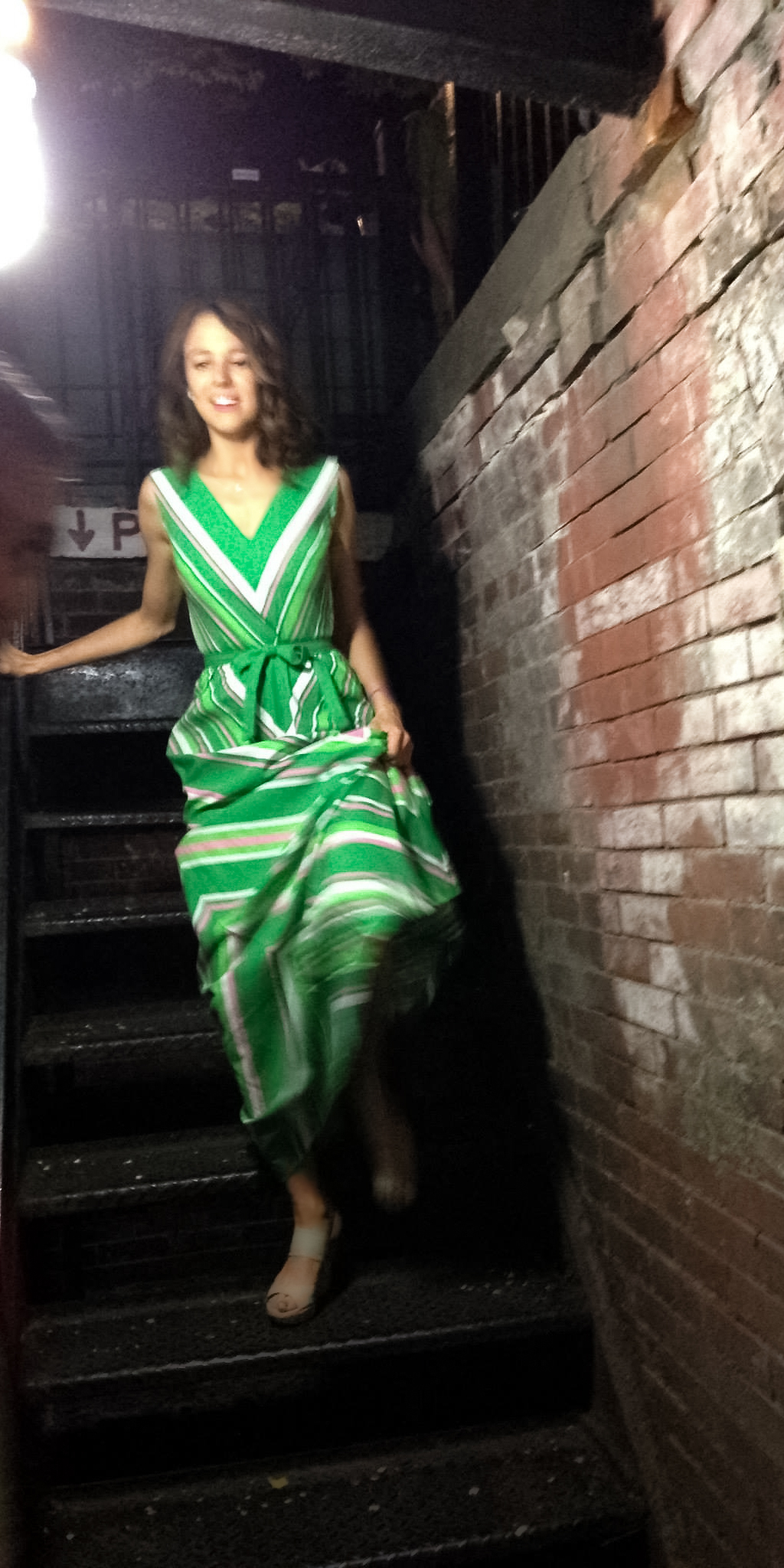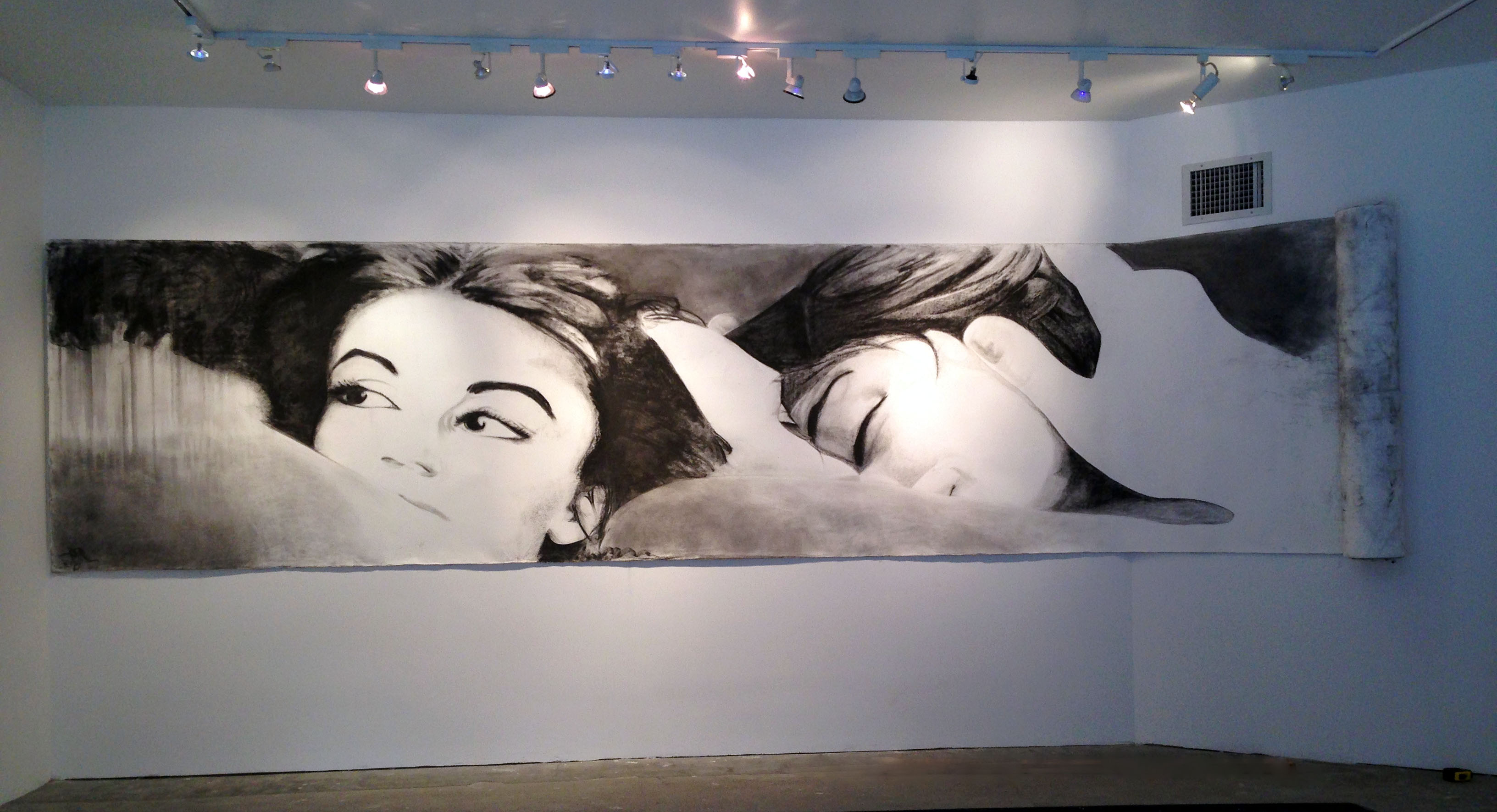Katie Peyton is a writer, curator and a visual artist. She received a M.F.A. in Writing from the New School, a graduate certificate in American Art from Sotheby’s Institute, and a B.A. from the University of Georgia. A contributor to Bomb, she has been published in literary journals including Gargoyle and Short Fast and Deadly. Peyton also operates Undercurrent Projects, an alternative space on East 5th near Bowery, which evolved from Peanut Underground, cofounded with Lee Wells in 2012. She has exhibited internationally and teaches at Parsons the New School for Design in New York.
What current project(s) are you at work on or have you just completed?
My exhibition, Se Cayo Todo (“It All Falls Down”), just opened at Terrazzo Art Projects, at the corner of Orchard and Hester. It’s up until September 15. The entire show consists of one seventeen-foot drawing.
What inspired this project?
I am exploring the idea that our greatest desires, and ultimately our very identities, are unattainable. We struggle our whole lives to define who we are, creating boundaries from which we identify ourselves. We see glimpses of our nature through keyhole moments: moments when we penetrate the static of our circumstances and see something that we think defines us (tell us what we are, what we want, etc). But when we try to put these moments together and make them add up to something, we become frustrated. They often cannot be reconciled with each other. But can we face a reality in which identities are beyond our grasp?
The piece extends for seventeen feet before curling into a scroll, which contains the rest of the drawing. It will never be unrolled. The idea is that something is always hidden or out of reach. Something is always lost.
It is also a meditation on anxiety, intimacy and memory, and the role these play in defining our identities and our desires. Working large-scale, I emphasize a sense of exposure and vulnerability.
At least, that is the metaphysical inspiration. But of course, an impetus for any large piece is often an enormous wall. This past January, I did a residency in Lima, Peru, at an artspace called ZONA 30. Not knowing what would be available to me there, I boarded the airplane toting a box of pencils, charcoal, and a 30 foot roll of Arches.
I somehow got it all safely to the space, which is located in old mining building built around an open courtyard in the center of historic downtown. The windows looked out onto Plaza San Martín, historically the people’s square. I got to the studio, and I sat down in the hallway, which was filled with stacks of old ledgers from the mining company that originally owned the building, people who had changed the landscape of the country and were now long dead.
There is something magical about Peru, which writers have been trying to capture for centuries: you stand on a geodesic point on top of a hillside, and you just feel the stretch of the sky, how big things really are. A lot of things were going through my head, which I hope are present in the work. I laid out the drawing and created a map for how it would be done. I decided not to cut the paper.
The original drawing was shown at Terror Gallery there. I continued to work on the piece when I got home, and the finished version is what is now hanging at Terrazzo now.
If this project is part of a long-term interest, how have you seen your work shift through time?
I’ve always considered myself a writer and an artist, but until recently I haven’t really approached the two in the same way. In the series that this work is from, I’ve been experimenting with using elements of story — metaphor, scene, narrative, voice, even in some cases dialogue. What you see is clearly a snapshot/snap-plot of a larger narrative. You know there is more to the story beyond the frame, and you are given that keyhole glimpse. It’s been a breakthrough, seeing the different threads of my life work together.
If you’re pursuing more than one project, are you finding connections between these pursuits, or do they feel separate?
Everything I do feels very connected. When I am not making art or writing, I run an underground salon and project space in the East Village called Undercurrent Projects. It is intended to function as a laboratory for creative conspiracy, providing a platform and structure for artists starting new conversations. I show artists who do one of three things: build bridges between artistic communities (literature and visual art, for example), challenge social and political power structures, and present alternate versions of what reality can look like.
I have also been invited to be this year’s curator for the Vanderbilt Republic’s “ART FROM THE HEART.“ A large part of the exhibition, which will take place in the gallery cooperative in Gowanus, Brooklyn, will be pulled from an open call. There are no submission fees and exhibiting artists share the net profits. It’s a good model that doesn’t exploit young artists who are looking to be seen, and the submission process just recently opened. Parsons and New School students are welcome to submit.
Do you find connections between these projects and your current, future, or recent work for Parsons?
Absolutely. This fall, I am teaching a seminar called “Fake.” I love the topic because authenticity is an idea I have explored in my own work: examining reasons that we search for something that may not exist through appropriation and recontextualization.
People will seek real satisfaction in, or expend extraordinary resources on, something that they are told is “authentic.” Our culture makes a clear distinction between a “copy” and a “forgery,” but where does “appropriation” cross the line into “plagiarism?” In the classroom, we start by asking what these words actually mean, and who gives them power, discussing all of these questions through the lens of literature and eventually, the students’ own work.
Se Cayo Todo is on view at Terrazzo Art Projects, at the corner of Orchard and Hester. A closing reception will be held on Sunday, September 14th from 6-8PM.




























